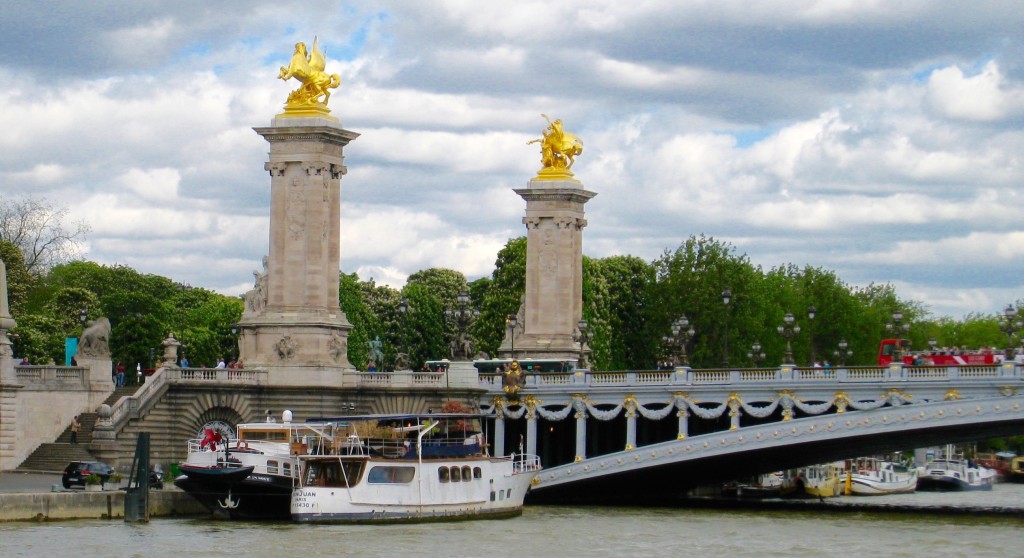 After a fabulous trip to British Columbia and Alberta, I am refreshed and ready to continue my travel blogs, retracing my steps in time to May 2013, when I toured the Burgundy wine region of France, drove to Monaco to watch Monte Carlo set up for the Grand Prix, flew to Lisbon for a visit, and ended my vacation in Spain.
After a fabulous trip to British Columbia and Alberta, I am refreshed and ready to continue my travel blogs, retracing my steps in time to May 2013, when I toured the Burgundy wine region of France, drove to Monaco to watch Monte Carlo set up for the Grand Prix, flew to Lisbon for a visit, and ended my vacation in Spain.
And yes, in a future thriller Darcy and Bullet will follow in my exact footsteps as they race against time to track down a killer before he strikes again. So focused are they on nabbing the murderer that they have no inkling someone else is fervently stalking them—until the hunter has them in his gun sight. Can Darcy stop him before he delivers a lethal blow?
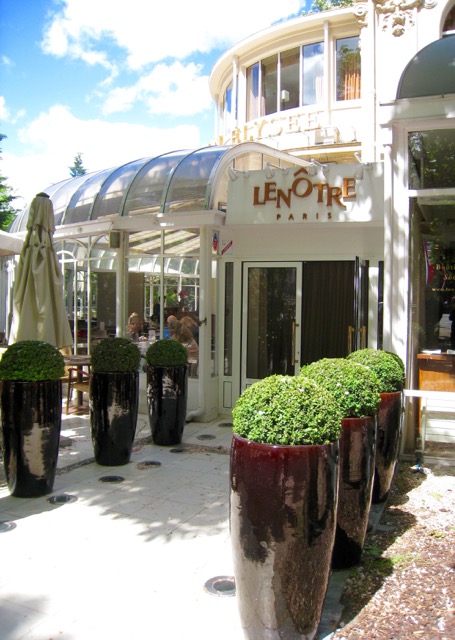 In late 2012, my gypsy husband decided it was high time I saw Paris. No, I had never been. Without missing a beat, he began planning our next trip. In May 2013, we boarded a flight from DFW to London and from there to Paris.
In late 2012, my gypsy husband decided it was high time I saw Paris. No, I had never been. Without missing a beat, he began planning our next trip. In May 2013, we boarded a flight from DFW to London and from there to Paris.
Just before noon, we checked into the Hôtel Duminy-Vendôme in Paris. Famished, we dumped our bags in the room and immediately left for a brisk walk down the Champs-Élysées to Le Café Lenôtre. In my head, I played and replayed Joni Mitchell’s “Free Man in Paris,” as I finally had my chance to stroll the popular boulevard. When we reached the Arc de Triomphe, we retraced our steps to the restaurant.
Seated in a quiet corner on the outdoor patio, we played tourist by poring over a map to chart an agenda for the next few days. We glanced at the menus, ordered, and dismissed the puzzled look on our server’s face; by no means is our French good, but we manage. Our orders arrived and our server left. We looked at each other and burst into laughter. Absorbed in our plans for the days ahead, we had overlooked the fact that an “entrée” in French is a dish served before the main course, i.e., a starter. With the attitude that there is a reason for everything, we ordered two more starters, giving us the opportunity to sample a broader selection of dishes and still leave room for dessert.
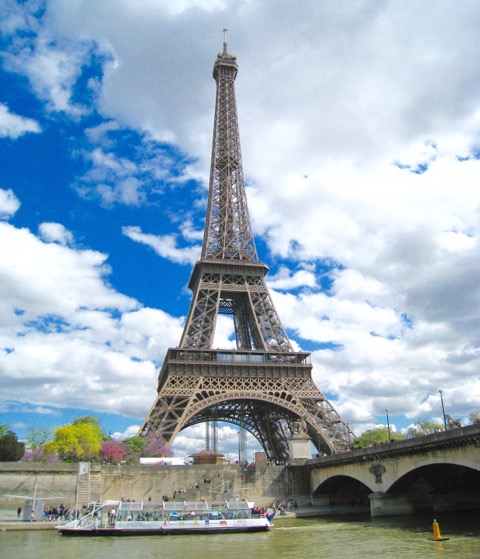 After lunch, we headed to the Seine for a boat cruise down the river. We queued up at Bateaux Mouches, boarded, and settled into our seats on the upper deck for a view of the iconic sites of Paris—Notre Dame, the Eiffel Tower, the Louvre, and the Musée d’Orsay, to name a few. There are some things you should experience once, and the river tour was one of them. From what I’ve heard, the summer tourist crowds can be quite unruly, but fortunately we were subjected to only one discourteous group of six, clad in tank tops and shorts, who soon sought refuge below deck, complaining about the chilly, overcast day. More interested in photographing the Eiffel Tower, I hadn’t paid much attention to the weather other than to consider how it might affect my pictures.
After lunch, we headed to the Seine for a boat cruise down the river. We queued up at Bateaux Mouches, boarded, and settled into our seats on the upper deck for a view of the iconic sites of Paris—Notre Dame, the Eiffel Tower, the Louvre, and the Musée d’Orsay, to name a few. There are some things you should experience once, and the river tour was one of them. From what I’ve heard, the summer tourist crowds can be quite unruly, but fortunately we were subjected to only one discourteous group of six, clad in tank tops and shorts, who soon sought refuge below deck, complaining about the chilly, overcast day. More interested in photographing the Eiffel Tower, I hadn’t paid much attention to the weather other than to consider how it might affect my pictures.
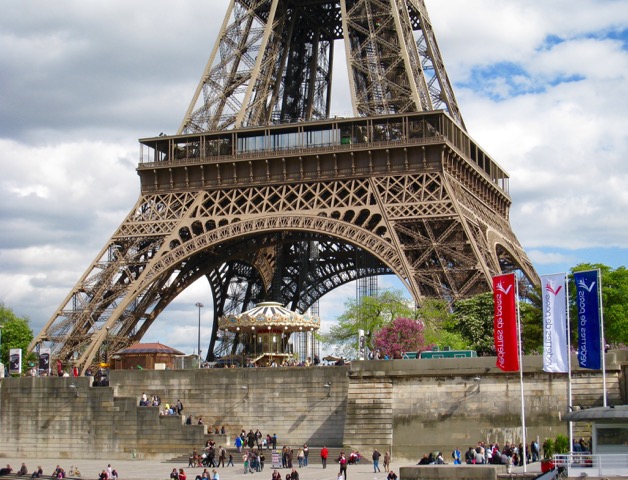 After photographing the Eiffel Tower from a distance, I couldn’t wait for an up-close look at this magnificent structure, so the minute we disembarked from the boat we headed straight there. Ever since I had admired the architecture of the Budapest-Nyugati Railway Terminal, also built by the Eiffel Company, I had wanted see the tower.
After photographing the Eiffel Tower from a distance, I couldn’t wait for an up-close look at this magnificent structure, so the minute we disembarked from the boat we headed straight there. Ever since I had admired the architecture of the Budapest-Nyugati Railway Terminal, also built by the Eiffel Company, I had wanted see the tower.
When we arrived at the famous landmark, I was awestruck by the massiveness of the iron structure. It was impressive in size and construction, and I was looking forward to dinner at the Jules Verne restaurant—for the food, but more so for what I anticipated would be a breathtaking view of Paris. However, I would have to wait. That night, we had reservations at Kunitoraya and planned to retire early, as jet lag had begun to set in.


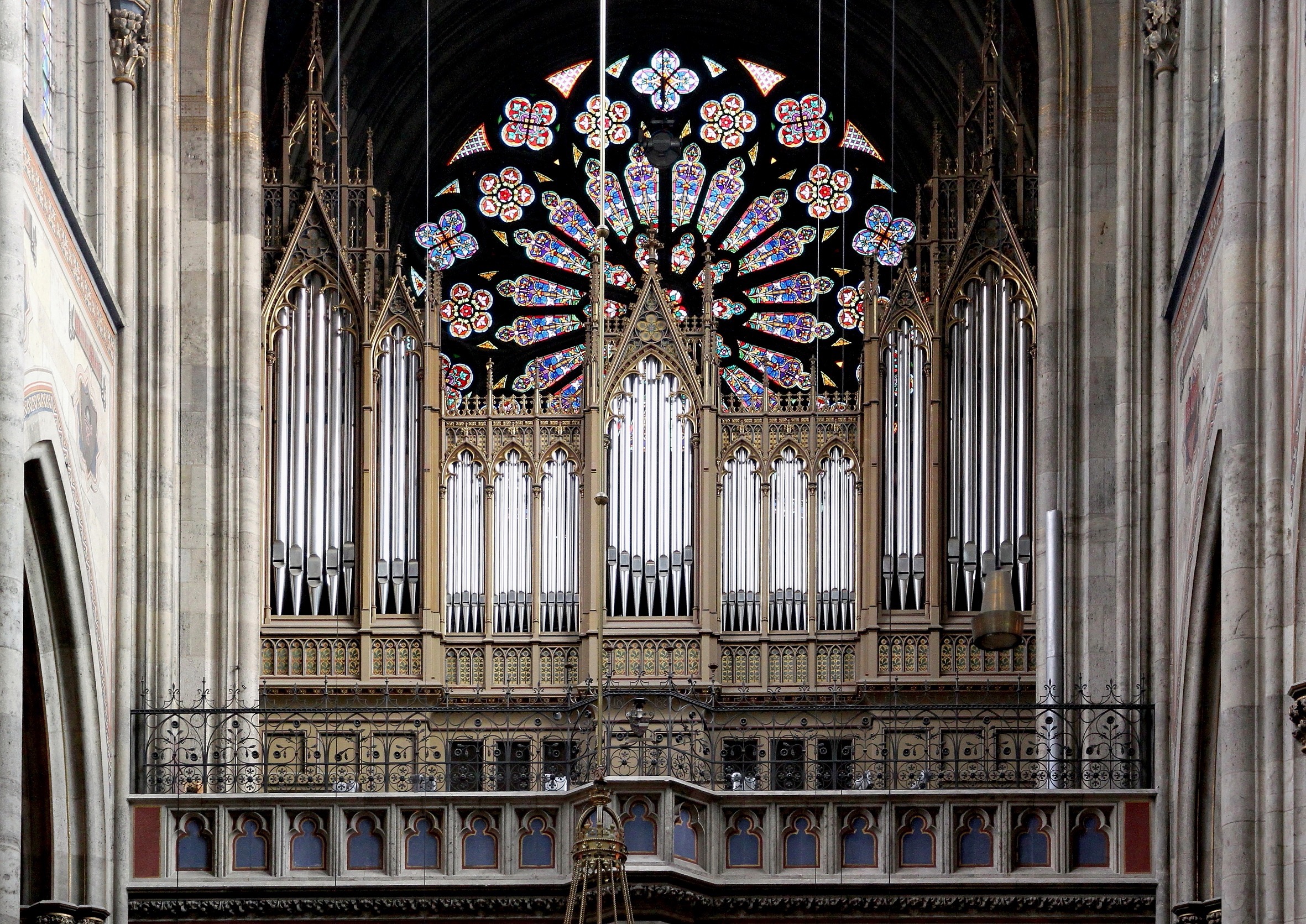
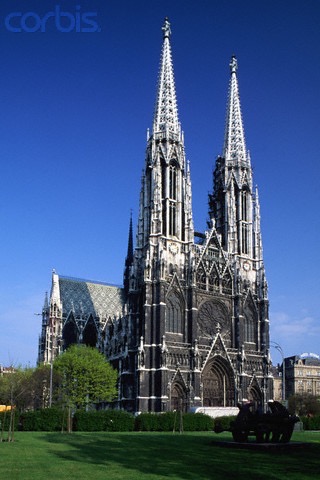

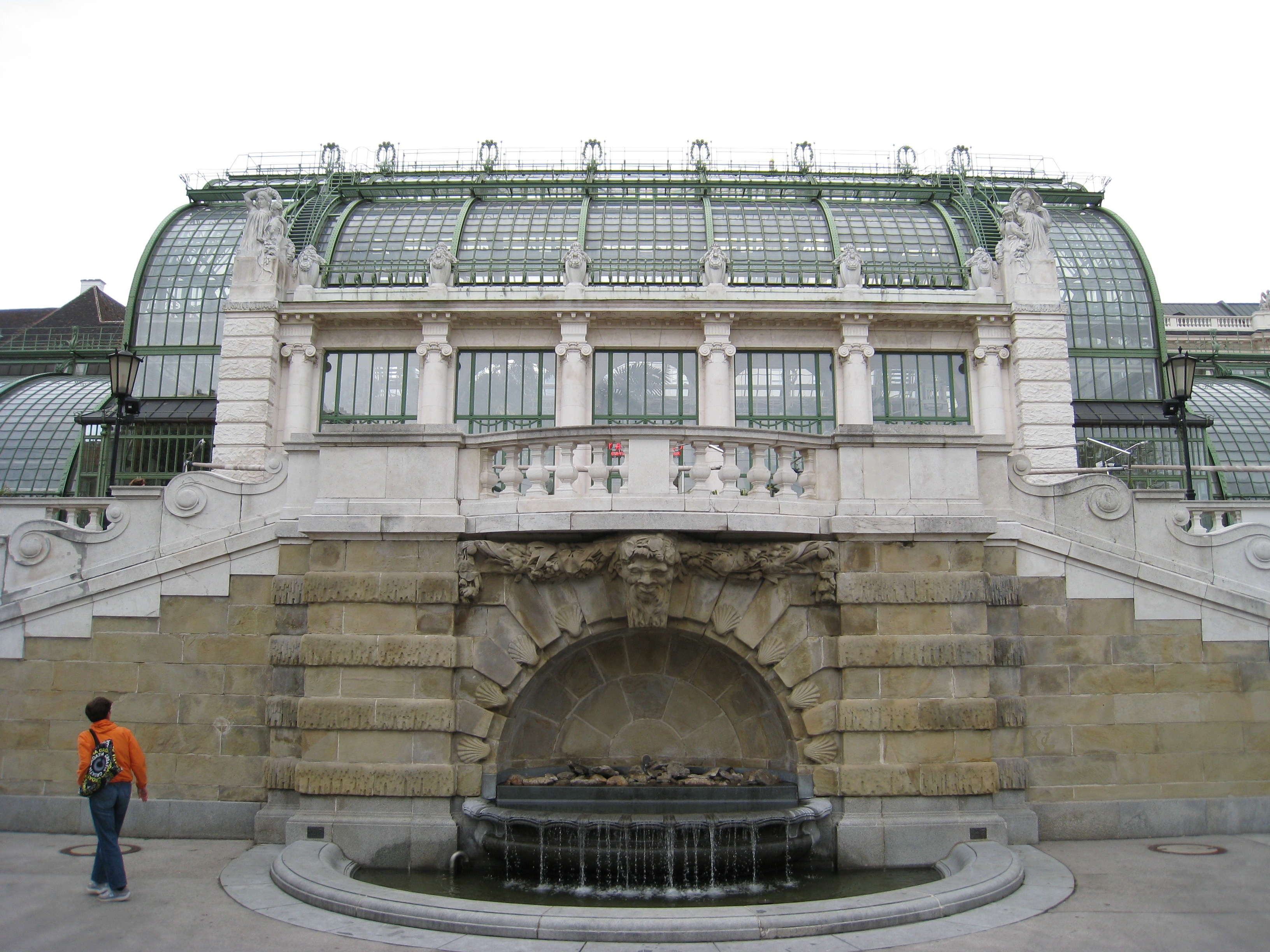
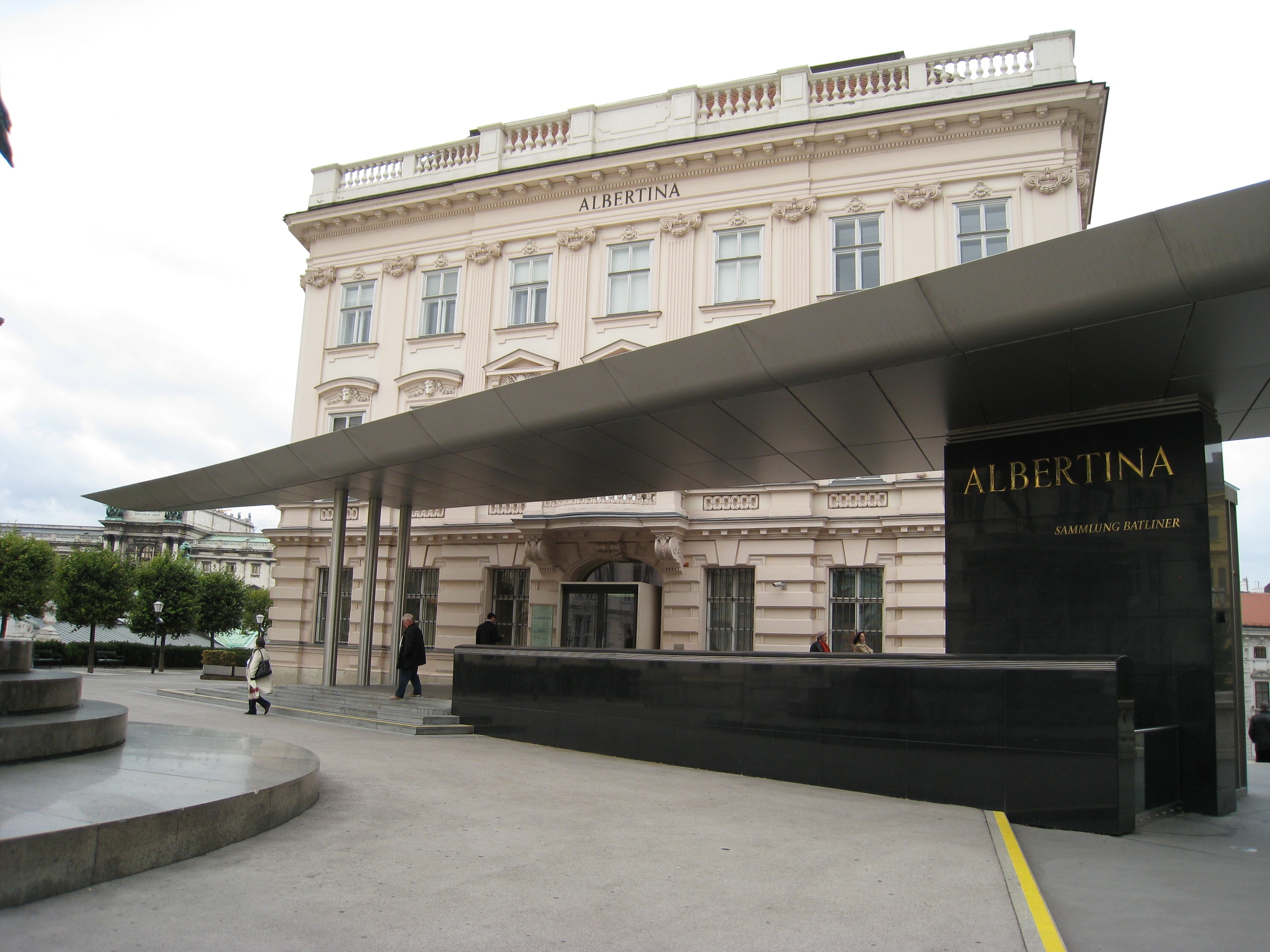
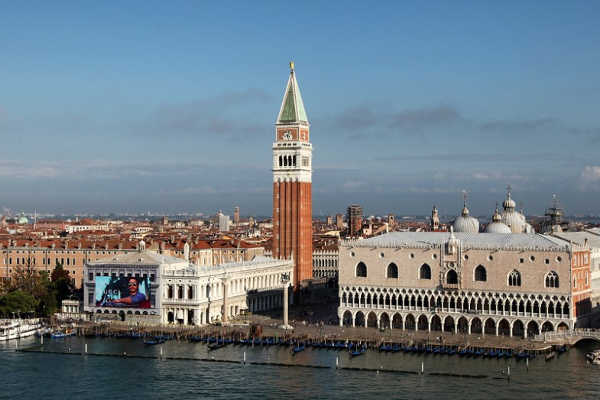
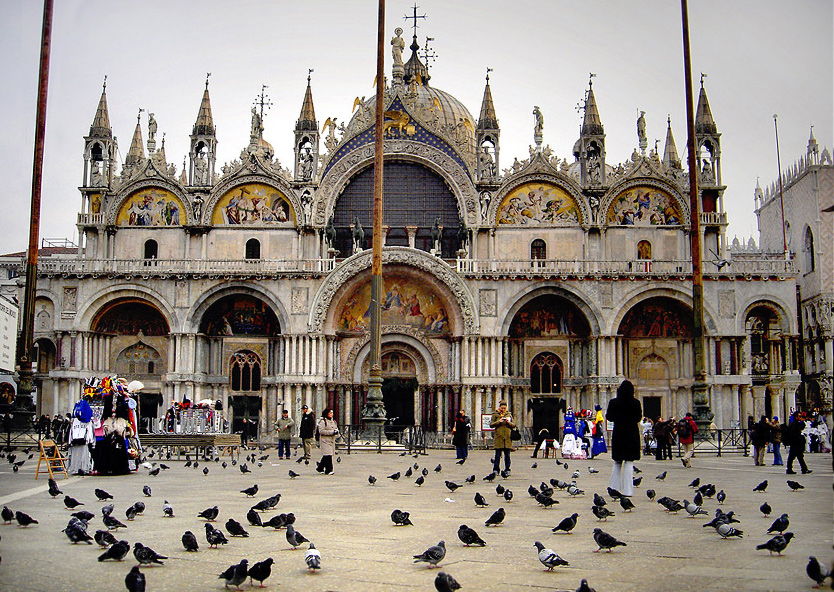 With my back to the basilica, I studied the architecture of the historic buildings. To my right were the old offices, circa sixteenth century, and the clock tower. To my left, the new offices, circa seventeenth century, and beyond them the square opened to the water. Behind me was the Correr Museum. Despite its size, the square felt protected, intimate, and definitely romantic.
With my back to the basilica, I studied the architecture of the historic buildings. To my right were the old offices, circa sixteenth century, and the clock tower. To my left, the new offices, circa seventeenth century, and beyond them the square opened to the water. Behind me was the Correr Museum. Despite its size, the square felt protected, intimate, and definitely romantic.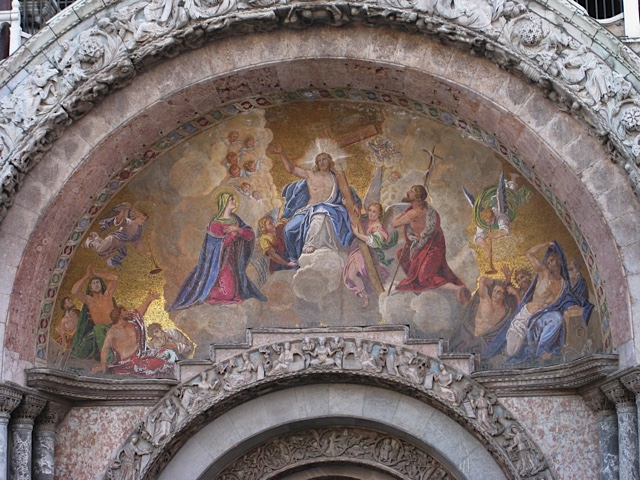 I gravitated toward the basilica, drawn by its Byzantine and Gothic architecture. Construction of the cathedral began in 829 with the intention of building a shrine for the body of St. Mark, believed to have been brought from Alexandria to Venice in the same year. Fire destroyed the church in 976, and it was rebuilt between 1043 and 1071. The exterior of the west facade is divided into three registers: lower, upper, and domes. The lower register has five arched portals that open into the narthex through bronze doors. The upper register has mosaics depicting the Life of Christ. The layout of the church is based on a Greek cross with four arms of equal length. Five domes cap the space—one over each arm and one over the center where the two arms cross.
I gravitated toward the basilica, drawn by its Byzantine and Gothic architecture. Construction of the cathedral began in 829 with the intention of building a shrine for the body of St. Mark, believed to have been brought from Alexandria to Venice in the same year. Fire destroyed the church in 976, and it was rebuilt between 1043 and 1071. The exterior of the west facade is divided into three registers: lower, upper, and domes. The lower register has five arched portals that open into the narthex through bronze doors. The upper register has mosaics depicting the Life of Christ. The layout of the church is based on a Greek cross with four arms of equal length. Five domes cap the space—one over each arm and one over the center where the two arms cross.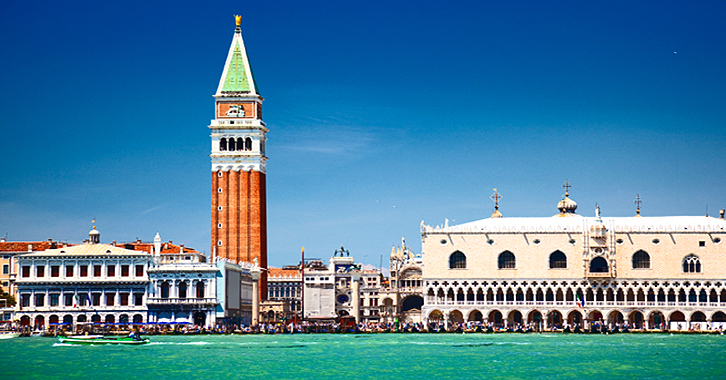 Outside the church, we crossed the square to the Campanile, the bell tower, which stands 323 feet high and has an elevator to the top for a spectacular view of Venice. We snapped a few shots of the city and some of the exterior of the tower, then walked on, hundreds of pigeons scattering in our wake. Relieved that we had avoided being dive-bombed by the birds, we skirted the outdoor cafés and left the piazza to explore the island, bypassing a visit to the Doge’s Palace. We were more interested in some other sites: the Rialto Bridge, the Grand Canal, Bridge of Sighs, and a few churches.
Outside the church, we crossed the square to the Campanile, the bell tower, which stands 323 feet high and has an elevator to the top for a spectacular view of Venice. We snapped a few shots of the city and some of the exterior of the tower, then walked on, hundreds of pigeons scattering in our wake. Relieved that we had avoided being dive-bombed by the birds, we skirted the outdoor cafés and left the piazza to explore the island, bypassing a visit to the Doge’s Palace. We were more interested in some other sites: the Rialto Bridge, the Grand Canal, Bridge of Sighs, and a few churches.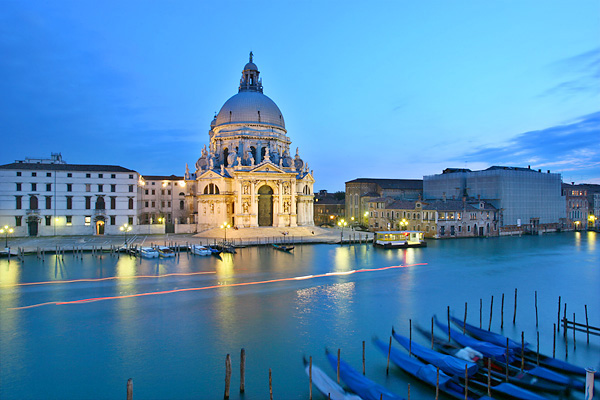 After two hours of sightseeing, and a tour of the Accademia Gallery, we made the short walk from the Accademia Bridge to Santa Maria della Salute. The domed baroque church stands on a narrow finger of land between the Grand Canal and the Bacino di San Marco. From what I have read, Doge Nicolò Contarini, before his death from the black plague, made a solemn vow to build a church to the Virgin Mary if she would free the city from the disease. He also promised that every year, on November 21st, he would lead a procession to the church. After his death, Doge Francesco Erizzo fulfilled Nicolò’s vow with the construction of Santa Maria della Salute. The plague killed almost one-third of the population of Venice.
After two hours of sightseeing, and a tour of the Accademia Gallery, we made the short walk from the Accademia Bridge to Santa Maria della Salute. The domed baroque church stands on a narrow finger of land between the Grand Canal and the Bacino di San Marco. From what I have read, Doge Nicolò Contarini, before his death from the black plague, made a solemn vow to build a church to the Virgin Mary if she would free the city from the disease. He also promised that every year, on November 21st, he would lead a procession to the church. After his death, Doge Francesco Erizzo fulfilled Nicolò’s vow with the construction of Santa Maria della Salute. The plague killed almost one-third of the population of Venice.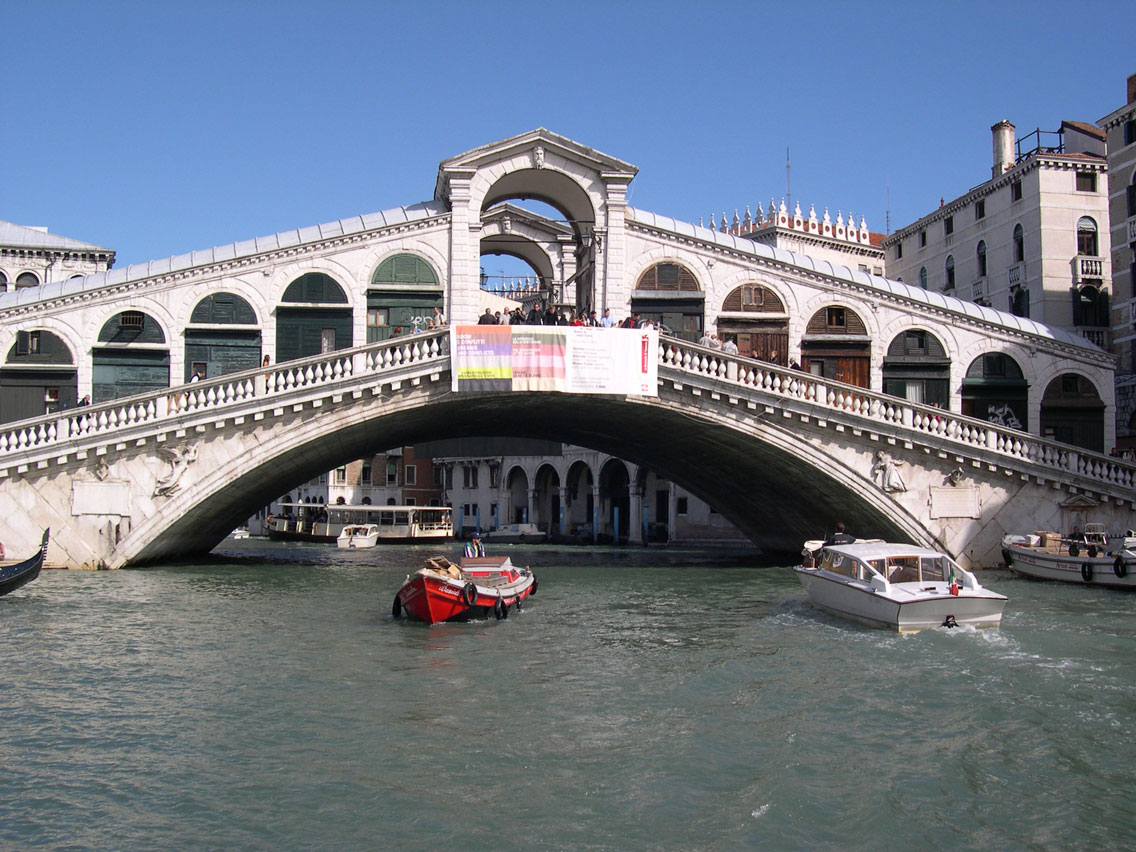 Late in the afternoon, we strolled across the Rialto Bridge to browse the shops and take in the scenery. We had been warned that some of the stores were not selling authentic Murano glass, but we had already made our purchases on the island and weren’t interested in buying more.
Late in the afternoon, we strolled across the Rialto Bridge to browse the shops and take in the scenery. We had been warned that some of the stores were not selling authentic Murano glass, but we had already made our purchases on the island and weren’t interested in buying more.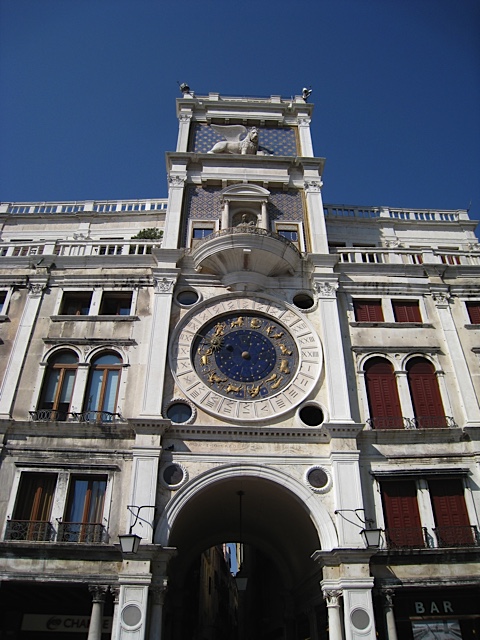 On our way back to our hotel, we stopped for a coffee at one of the cafés that line St. Mark’s Square, and to give our feet a short break before we made the jaunt to dinner. That night, we had reservations at Osteria Da Fiore.
On our way back to our hotel, we stopped for a coffee at one of the cafés that line St. Mark’s Square, and to give our feet a short break before we made the jaunt to dinner. That night, we had reservations at Osteria Da Fiore.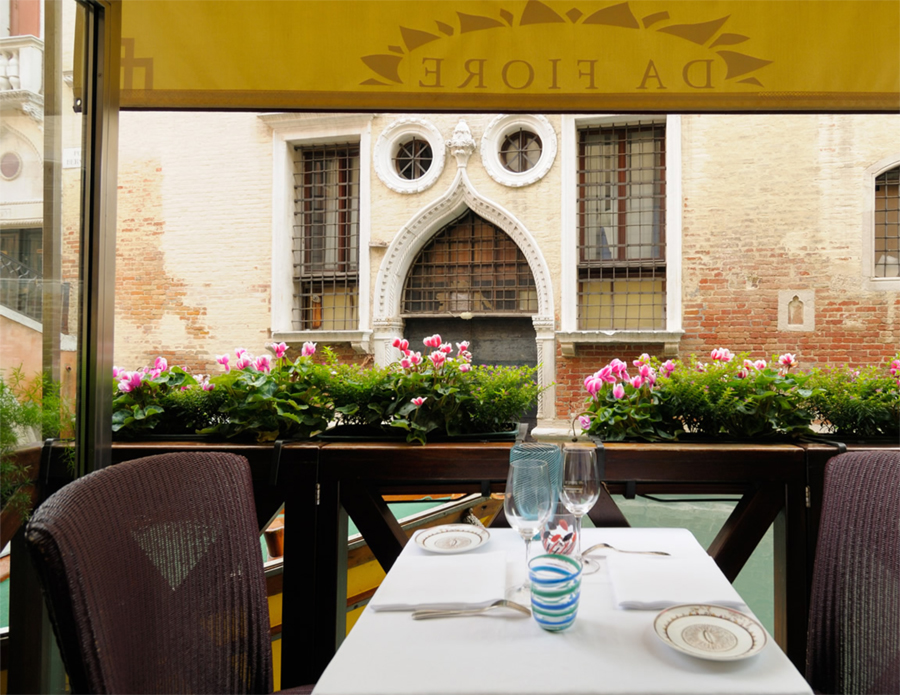 The warm evening was delightful, so we took our time walking through the maze of quaint narrow streets until we reached our restaurant. The waitstaff led us to a table for two on the only balcony in Da Fiore. It overlooked a quiet canal. The setting was very romantic, especially when the occasional gondola would cruise by and soft music would drift our way as the gondolier serenaded his riders . . . and us.
The warm evening was delightful, so we took our time walking through the maze of quaint narrow streets until we reached our restaurant. The waitstaff led us to a table for two on the only balcony in Da Fiore. It overlooked a quiet canal. The setting was very romantic, especially when the occasional gondola would cruise by and soft music would drift our way as the gondolier serenaded his riders . . . and us.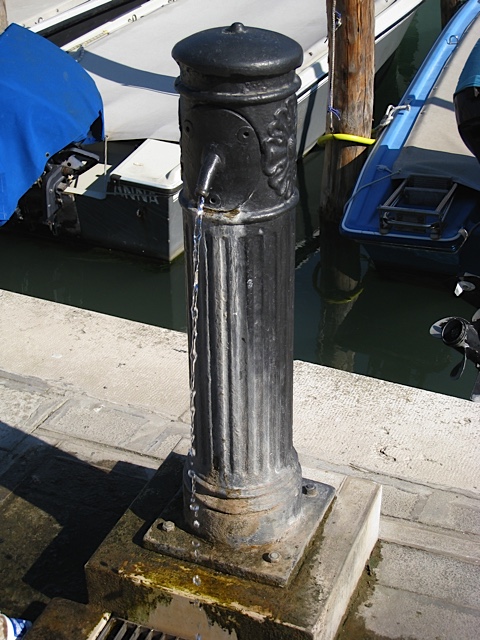 We passed on the six- or seven-course tasting menu and ordered à la carte, beginning with tiny shrimp tempura on creamy polenta followed by a seafood tower. For our mains, more fish. I had shrimp in seven spices, and Dave ordered wild bass steamed with apples. For dessert, I chose the chocolate cake and Dave an orange-apricot cream. Full, we sipped our wine and watched the next gondola as it slowly glided down the canal past our table, this gondolier too serenading us with a low, melodic tune.
We passed on the six- or seven-course tasting menu and ordered à la carte, beginning with tiny shrimp tempura on creamy polenta followed by a seafood tower. For our mains, more fish. I had shrimp in seven spices, and Dave ordered wild bass steamed with apples. For dessert, I chose the chocolate cake and Dave an orange-apricot cream. Full, we sipped our wine and watched the next gondola as it slowly glided down the canal past our table, this gondolier too serenading us with a low, melodic tune.